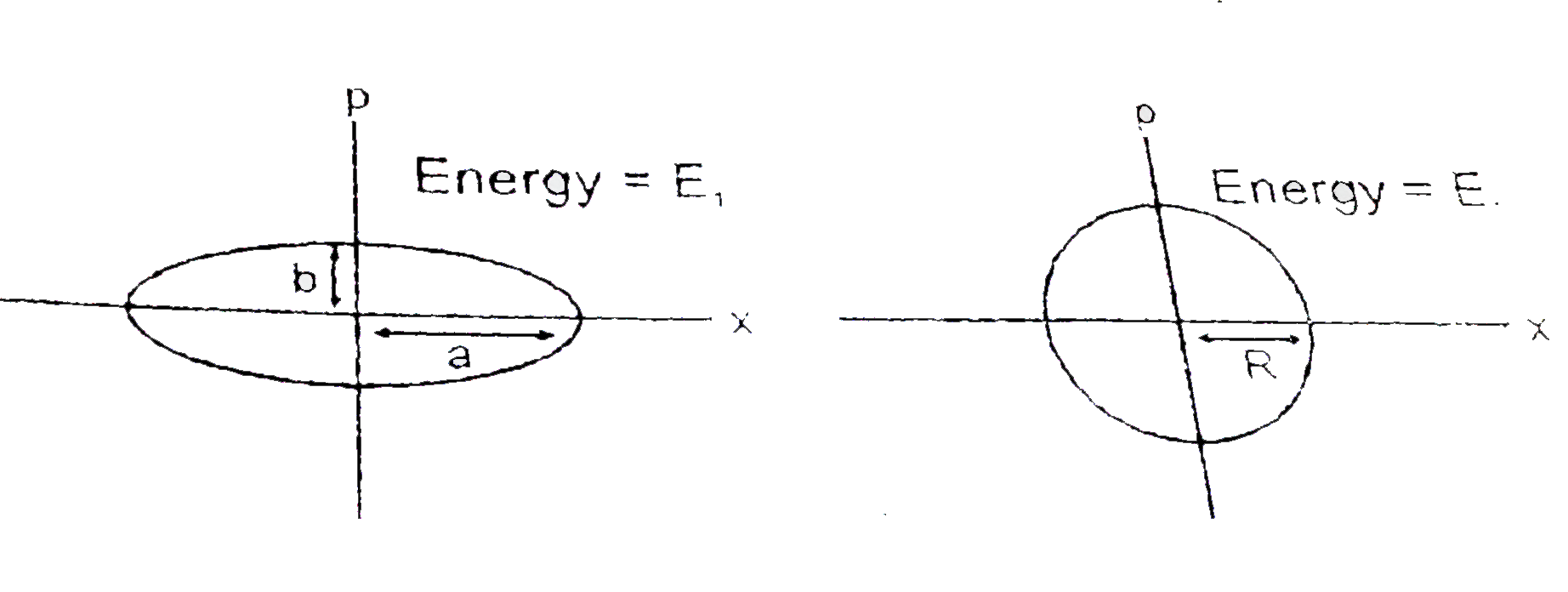Two independent harmonic oscillators of equal mass are oscillating about the origin with angular frequencies ω1 and ω2 and have total energies E1 and E2 repsectively. The variations of their momenta p with positions x are shown in figures. If ab=n2 and aR=n, then the correc t equation(s) is (are) :

E1ω1=E2ω2
ω2ω1=n2
ω1ω2=n2
E1ω1=E2ω2
The correct Answer is:BD
x=Asin(ωt)
V=Acos(ωt)
At mean position
P1=mA1ω1=b,A1=a(from ellipse)
P2=mA2ω2=R,A2=R (From circle)
Also, ab=n2andaR=n⇒Rb=n , E1=P212m and E2=P222m
E1E2=(bR)2=1n2⇒mω21A21mω22A22=1n2 ⇒ω1ω2=1n2⇒E1ω1=E2ω2
Similar Questions
Two physical pendulums perform small oscillations about the same horizontal axis with frequencies ω1 and ω2 . Their moments of inertia relative to the given axis are equal to I1 and I2 respectively. In a state of stable equilibium the pendulums were fastened rigifly together. What will be the frequency of small oscillations of the compound pendulum ?
View SolutionThe forced harmonic oscillations have equal displacement amplitude at frequencies ω1=400s−1 and ω2=600s−1. Find the resonance frequency at which the displacement amplitude is maximum.
View Solution
Knowledge Check
Two bodies of different masses m1 and m2 have equal momenta. Their kinetic energies E1 and E2 are in the ratio
A√m1:√m2Bm1:m2Cm2:m1Dm21:m22In R−L−C series circuit, we have same current at angular frequencies ω1 and ω2. The resonant frequency of circuit is
Aω21ω2Bω22ω1C√ω1ω2Dω1+ω2A particle performing SHM with angular frequency ω=5000 radian/second and amplitude A=2 cm and mass of 1 kg. Find the total energy of oscillation.
A2 kJB5 kJC7 kJD15 kJ
In forcd oscillation of a particle, the amplitude is maximum for a frequency ω1 of the force, while the energy is maximum for a frequency ω2 of the force. What is the relation between ω1 and ω2 ?
View SolutionIn the given figure, E=12V, R1=3Ω,R2=2Ω and r=1Ω. The choose the correct option/s

View SolutionTwo bodies with masses 1kgand2kg have equal kinetic energies. If p1andP2 are their repective momenta, then p1/P2 is equal to :
View SolutionA particle of mass m is executing oscillations about the origin on the x-axis, it's potential energy is U(x)=k|x|2, where k is a positive constant, if the amplitude of oscillation is a, then it's time period T is
View SolutionA particle of mass m=1kg excutes SHM about mean position O with angular frequency ω=1.0rad/s and total energy 2J. x is positive if measured towards right from O. At t=0, particle is at O and movel towards right.

View Solution

